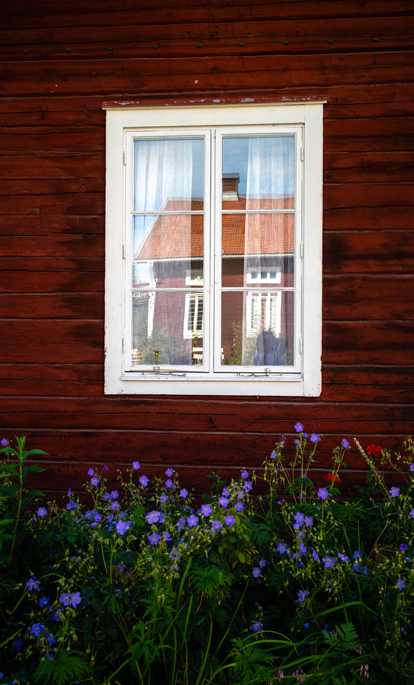
A few suggestions to get the holiday planning process started

Enthusiasm is contagious, and there’s no better way to get excited about a Swedish getaway than by talking to our travel consultants. Tap into the Swedish wilderness in a specially selected cabin (we’re constantly on the hunt for the best), or fika ‘til you drop in our favourite Stockholm cafes (which we’ve done the tough job of testing out for you). Along with our hands-on Concierge team, we can help you do as the locals do and organise the best activities for your trip, from overnight dog sledging to outdoor cooking.
ENQUIRE NOWDiscover different ways to explore Sweden
Practical advice and inspiration to help you prepare for your holiday
From Stockholm to Swedish Lapland, our travel consultants know exactly where to go and when – how to avoid the midsummer crowds, the best place to go for lobster season and the optimum time and location to (hopefully) seek out the Northern Lights. You can’t put a price on that kind of intel. With the help of our hands-on Concierges and specialist guides, you can focus on whatever interests you: freshly caught seafood, art museums in Oslo, learning about the Sami culture... there’s something for everyone, come snow or shine.

Sweden is perfect for city lovers who will no doubt be wooed by Stockholm’s charm, making this the perfect city for a long weekend. This is a sophisticated, elegant, manageable and thoroughly civilised city with the added attraction of an archipelago which can be explored by boat. Design hotels and excellent restaurants abound, and Swedish hospitality is legendary. Head for the bohemian area around Rörstrandsgatan, in west Stockholm, where you'll find cosy cafés and cheapish antique shops. Beyond the capital, two other Swedish cities deserve recognition. Malmo, the country’s third largest city, features a highly strollable old town and buzzing waterfront scene while Gothenburg boasts cool cuisine, sea breezes and an impressive port. Visit in the summer for long sunny days, ideal for hiking in the wild countryside according to the admirable 'allemansratten': Swedish people's right to roam. Those who love to spend time in the great outdoors can enjoy Sweden holidays all year round; splashing about in kayaks and hiking picturesque coastal trails in the summer and dog-sledding through the snow-clad forests come winter.
The capital oozes urban cool thanks to its creative cafe culture and revered culinary scene. If you’ve already ticked Stockholm off your list, it’s worth a jaunt to some of Sweden’s other pretty towns such as Gotland, once a Viking settlement, or to the thousands of little islands in Bohuslan’s archipelago, renowned for their relaxed vibe and outstanding seafood – perfect for a summer holiday. Boasting 29 national parks, you can encounter some of the loveliest rural scenery imaginable on Sweden holidays, with mountains, enchanting lakes and excellent beaches lined with kelp forests and coral. Venture off-the-beaten track and look out for secret isles with clapboard houses and small fishing communities which tourists may never have known existed. Then of course there are the Northern Lights, one of earth’s greatest natural phenomena.
Visit the winter wonderland that is Swedish Lapland for a true Narnia experience. Ever tried ice driving or ice fishing? This is the place to do it. And don’t forget to sample some of Sweden’s traditional delicacies, such as reindeer stew and sweet tasting cloudberries. Chase the Northern Lights, earth’s most spectacular light show, on a snowmobile, or look out for its shimmering aurora from a floating sauna. Aside from the Northern Lights, there are exhilarating winter activities including snowshoeing, ice fishing and cross-country skiing. Families can enjoy husky sledding through the powder-white snow and elk safaris in the forested parks. Or for cultural immersion, meet the ethnic Sami people who were traditionally semi-nomadic reindeer herders. While in their company, we can arrange three-course dinners (most probably including reindeer in various forms) by a frozen lake complete with candles and a crackling fire. No-one could accuse Sweden holidays of being run of the mill...
Even further north, right on the Norwegian border, lies the tiny ski resort of Riksgränsen. Skiing here starts in February, when the 24-hour darkness of mid-winter begins to lift; come May, you can head back out on to the slopes after supper to ski in a t-shirt under the midnight sun. More conventional skiing is available at the slick resort of Are (pronounced 'oar-e').

Our team of destination experts will get to know you and your unique requirements for your holiday

We work with you to build an ultra-personalised holiday itinerary with your choice of accommodation, experiences and activities

All of our holidays include little extras designed to make a big difference to your trip, from fast-tracking you through airport check-in and security to our network of local Concierges